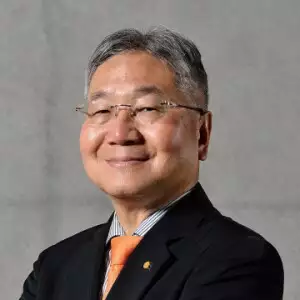What happened?
Over the past few years, the world has experienced the arduousness caused by supply chain disruptions. The intensifying political tension between the United States and China has led to formulating bilateral or multilateral cooperative agreements to establish supply chain alliances for mutual balance. Moreover, the market's demand for a wide variety of products in smaller quantities, along with the zero-carbon trends, has promoted to move towards shorter supply chains and restructured partnerships.(IEK)
- The maturation of the Internet of Things (IoT) and AI technologies has been gradually gaining attention, particularly with the growing applications of generative AI. Industry leaders showcased their implementation of these cutting-edge technologies in factory settings at the Hanover Industrial Trade Fair in Germany.(EDN Taiwan)
- In the face of evolving global dynamics, the supply chain network of Asian countries such as South Korea, Japan, Taiwan, Singapore, Vietnam, and Thailand may gradually replace China to become the focal point of global manufacturing activities.(The Economist)
- The World Economic Forum (WEF) has unveiled its latest selection of "Global Lighthouse Factories," which serve as beacons of Industrial 4.0, smart manufacturing, and digital transformation. Among the 29 newly added benchmark factories, Taiwan, Thailand, the Philippines, Singapore, and Japan each have a factory that has made the prestigious list.(WEF: Global Lighthouse Network)
How's the latest development of intelligent manufacturing progress in key Asian supply chain countries?
Intelligent manufacturing is built upon digitization, and key Asian countries in the supply chain are leveraging their diverse industrial backgrounds as they journey forward. Along the way, each country faces its own set of opportunities and challenges.
- According to senior analyst P.K. Tseng from TrendForce Corp., Japan, and South Korea have progressed in digitalization and communication. Japan, with its rich history in manufacturing, has a firm grasp on the key technologies and components. Both countries are swiftly moving towards intelligent manufacturing, where they have respective strengths, such as semiconductors and heavy industries.
- Cathy Yeh, the Principal Group PM Manager at Customer Innovation, Industrial Solutions, Microsoft Corp., points out that Singapore effectively utilizes its maritime nation mindset to understand the demand side of the intelligent manufacturing market. With visionary government policies, and a thriving logistics and transportation industry, Singapore effectively plays the role of creating demands in the supply chain and being the hub of transshipment across the Asia Pacific region.
- Huang Ming-he, Chairman of Victor Taichung Machinery Works Co., Ltd., shares that Southeast Asian countries like Vietnam and Thailand have an advantage in their abundant labor force. However, they need to leverage foreign assistance to have the opportunity to move towards automation and intelligent manufacturing. The demand for automation from small and medium-sized enterprises in the local supply chain has become a market opportunity for Taiwanese manufacturers.
- Cathy Yeh further emphasized that Taiwan's manufacturing industry possesses exceptional resilience, keen market insights, and strong technical capabilities. Nevertheless, investing in talent and tools is essential for the process of digital transformation.
What will happen in the future?
The World Economic Forum has released a report on "Global Lighthouse Factories," which has specially highlighted the list of "Sustainable Lighthouse Factory." Given the growing trend towards achieving zero net carbon emissions, the focus for the manufacturing industry in the next decade will be on harnessing digital transformation and Industry 4.0 technologies to achieve green manufacturing.(WEF: Global Lighthouse Network)
- With carbon emissions data serving as the decisive factor for manufacturers to secure a position within the supply chain, energy efficiency and carbon reduction have emerged as explicit goals for manufacturers aiming to incorporate intelligent technologies and equipment into their operations. (According to P.K.’s sharing)
- The key lies in automating the collection, exchange, and consolidation of carbon emissions data while effectively managing the intricate details involved in the process. (According to Cathy’s sharing)
- A promising approach emerges as companies showcase the effectiveness of tackling the most challenging aspects first when calculating internal carbon emissions. Collaborative efforts involving industry, government, academia, and research institutions, with leading companies at the forefront of driving transformative initiatives among partner firms, are expected to yield preliminary results within a three-year timeframe.(According to Ming-he’s sharing)





















